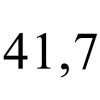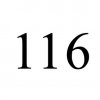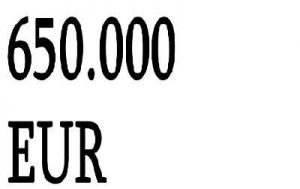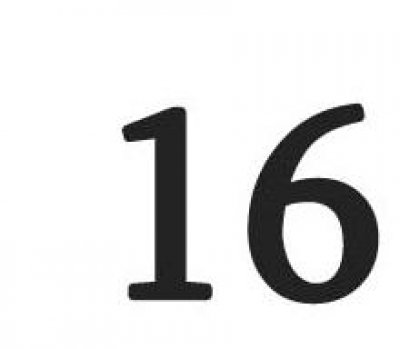Luxemburg’s minimum
 Out of 27 countries members of the European Union 20 has had this year the minimum salary prescribed by the law. Among them are Belgium, Bulgaria, Spain, Estonia, Greece, France, Hungary, Ireland, Lithuania, Latonia, Luxemburg, Malta, Netherlands, Poland, Portugal, Romania, Slovakia, Slovenia, Czech Republic and Great Britain. In the rest of them, the bottom limit of salary has been regulated by a collective contract on the level of occupation. Besides that, the minimum salary has been prescribed by the law by one country candidate, Turkey.
Out of 27 countries members of the European Union 20 has had this year the minimum salary prescribed by the law. Among them are Belgium, Bulgaria, Spain, Estonia, Greece, France, Hungary, Ireland, Lithuania, Latonia, Luxemburg, Malta, Netherlands, Poland, Portugal, Romania, Slovakia, Slovenia, Czech Republic and Great Britain. In the rest of them, the bottom limit of salary has been regulated by a collective contract on the level of occupation. Besides that, the minimum salary has been prescribed by the law by one country candidate, Turkey.
The last report of the European statistic agency Euro-stats shows that the height of a monthly minimum salary has been going from 112 Euros in Bulgaria up to 1.610 Euros monthly in Luxemburg. When comparing the buying power, the difference in height of minimum among the countries members is being by some point reduced. So far, even then the highest minimum salary remains by the employees in Luxemburg (1.532 Euros), while the workers in Romania have the lowest one (232 Euros).
The countries which have prescribed the height of minimum salary by the law can be divided in three groups. Those countries, in which the minimum is between 100 and 350 Euros, as are Bulgaria, Romania, Latvia, Lithuania, Slovakia, Estonia, Hungary, Czech Republic and Poland, belong to the first group. The second group consists of five countries, in which the minimum salary goes from 500 to 700 Euros. Those are Portugal, Slovenia, Malta, Greece and Spain. The third group consists of the countries members, in which the minimum salary prescribed by the law is close or even more than 1.150 Euros. Such minimum has been ensured to the employees in Great Britain, France, Belgium, Netherlands, Ireland and of course, Luxemburg. The ensured salary in Turkey is 333 Euros. Malta and Luxemburg are the only ones which can be proud by the fact that their minimum salary is around 50% of an average salary in country. It should also be said that the ensured minimum on Malta is 612 Euros.
The rest of the countries are being split into two groups – the first one in which the ensured minimum is less than 40% of an average salary in country and the other one in which a part of the minimum salary in an average salary goes from 41 to 47%. In the first group are Latvia, Lithuania, Poland, Hungary, Rumania, Czech Republic and Great Britain, and in the second one are Portugal, Spain, Ireland, Slovenia, Bulgaria, Netherlands and Slovakia. In the USA the minimum salary is around 35% of an average salary.
(Source: Euro-stat, December 2008.)
Aging Europeans
 That the “old continent” gets older by the age of its population, has been known for years, but the statisticians themselves were surprised by the results of the newest research, which has shown that by 2060 almost the third of population of the European Union will be 65 and older. They now make 17% of population. The European Commission is worried by this, because it could badly impact the economy. Another bad news is that the total number of citizens of the Union will droop at the same time, because the number of dead will surpass the number of the newborns. This problem is possible to moderate by the immigration. According to the results of the Euro-stats, if the current tempo continues, in the next half of the century mostly will be reduced the number of citizens in Bulgaria (28%) and the Baltic countries (Latonia by 26%, Lithuania by 24%), Romania (by 21%) and Poland (by 18 %), while the population of Cyprus will be bigger by 66%, Ireland by 53%, Luxemburg by 52%, Great Britain by 25% and Sweden by 18%. Germany will “reduce” itself from 80 to 71 million people, and by a number of citizens it will be foreran by Great Britain and France. Italy with 59 million of citizens and Spain with 52 million will remain among the five most populated countries in 2060 as well.
That the “old continent” gets older by the age of its population, has been known for years, but the statisticians themselves were surprised by the results of the newest research, which has shown that by 2060 almost the third of population of the European Union will be 65 and older. They now make 17% of population. The European Commission is worried by this, because it could badly impact the economy. Another bad news is that the total number of citizens of the Union will droop at the same time, because the number of dead will surpass the number of the newborns. This problem is possible to moderate by the immigration. According to the results of the Euro-stats, if the current tempo continues, in the next half of the century mostly will be reduced the number of citizens in Bulgaria (28%) and the Baltic countries (Latonia by 26%, Lithuania by 24%), Romania (by 21%) and Poland (by 18 %), while the population of Cyprus will be bigger by 66%, Ireland by 53%, Luxemburg by 52%, Great Britain by 25% and Sweden by 18%. Germany will “reduce” itself from 80 to 71 million people, and by a number of citizens it will be foreran by Great Britain and France. Italy with 59 million of citizens and Spain with 52 million will remain among the five most populated countries in 2060 as well.
(Source: European forum, September 2008)
Who needs a fast internet in the EU?
 Even though 80% of users in the European Union have a fast internet connection, and a half of them do not use the “network” at all, has been shown by the research implemented for the needs of the European Commission, as a part of the study on progress of informatics and communication technologies. Around 250 million of citizens of the EU, or more than a half of the total population, regularly uses Internet, out of which the majority by the connection of high speeds. At the same time, 40% of citizens of the EU do not know how to use an electronic mail and research services, mostly in Romania (69%), and the least in Denmark and Netherlands (13%). The European Commission is trying to ensure that a big number of public services in the EU become totally available in an electronic form (60% by now) and that all parts of the Union become connected.
Even though 80% of users in the European Union have a fast internet connection, and a half of them do not use the “network” at all, has been shown by the research implemented for the needs of the European Commission, as a part of the study on progress of informatics and communication technologies. Around 250 million of citizens of the EU, or more than a half of the total population, regularly uses Internet, out of which the majority by the connection of high speeds. At the same time, 40% of citizens of the EU do not know how to use an electronic mail and research services, mostly in Romania (69%), and the least in Denmark and Netherlands (13%). The European Commission is trying to ensure that a big number of public services in the EU become totally available in an electronic form (60% by now) and that all parts of the Union become connected.
Romanians and Bulgarians work the longest, while Swedes rest the most
 If Romanians and Bulgarians have hoped to have a rest as soon as they enter the European Union – they deceived themselves badly! The data of the European Industrial Relations Observatory EIRO (for 2007.) shows that they work much longer than other Europeans – 41.7 hours per week, while an average work time in the Union is 38.6 hours. The average was also outran by the employed in Great Britain (41.4 hours), Czech Republic (41.2 hours) and Germany (41.1 hours), even though, in most of the “old” members of the EU, it is being worked shorter than in the newly entered: average for first 15 members of the EU is 37.9 hours, and for the last 12 is – 39.6 hours. The shortest work week have French (37.7 hours), Italians (38.4) and Danes (38.6 hours), has been stated in the research. In all 27 countries of the EU, the employed in the industry and trade are spending significantly more time working than those in the public services. An average work time of the employed in Germany, not only that is longer than the average in the EU, but they are also bigger than the time agreed by the tariff contracts between the employers and employees in this country (which is only 36.7 hours), and even by 3.3 hours longer than in 2003! This discrepancy is explained by a big number of overworked hours, but also by the fact that more and more companies are not observant to the tariff contracts, which is a subject of a sharp critique of the German Unions Coalition. Paid vacation for the employed in countries of the EU in average is 25.2 days, by which there is a huge difference between “old” and “new” members: average by the first ones is 26.7 days, and 21.9 days by the last ones. The employed in Sweden have the longest vacation (33 days) and the shortest is in Greece (23 days).
If Romanians and Bulgarians have hoped to have a rest as soon as they enter the European Union – they deceived themselves badly! The data of the European Industrial Relations Observatory EIRO (for 2007.) shows that they work much longer than other Europeans – 41.7 hours per week, while an average work time in the Union is 38.6 hours. The average was also outran by the employed in Great Britain (41.4 hours), Czech Republic (41.2 hours) and Germany (41.1 hours), even though, in most of the “old” members of the EU, it is being worked shorter than in the newly entered: average for first 15 members of the EU is 37.9 hours, and for the last 12 is – 39.6 hours. The shortest work week have French (37.7 hours), Italians (38.4) and Danes (38.6 hours), has been stated in the research. In all 27 countries of the EU, the employed in the industry and trade are spending significantly more time working than those in the public services. An average work time of the employed in Germany, not only that is longer than the average in the EU, but they are also bigger than the time agreed by the tariff contracts between the employers and employees in this country (which is only 36.7 hours), and even by 3.3 hours longer than in 2003! This discrepancy is explained by a big number of overworked hours, but also by the fact that more and more companies are not observant to the tariff contracts, which is a subject of a sharp critique of the German Unions Coalition. Paid vacation for the employed in countries of the EU in average is 25.2 days, by which there is a huge difference between “old” and “new” members: average by the first ones is 26.7 days, and 21.9 days by the last ones. The employed in Sweden have the longest vacation (33 days) and the shortest is in Greece (23 days).
(Source: European forum, September 2008)
Do not send the letters from Finland
 Sending a simple letter from countries of the European Union costs the least on Malta and in Slovenia – 16 or 20 cents, and the most in Finland – even 70 cents, has been announced by the Euro-stats. The biggest density of mails has Cyprus, one on 743 citizens on average, and the smallest one has Spain, only one on 12.958 persons. The research “Spenders in Europe – services to citizens in the EU in facts and figures” has also shown that by the number of ATM’s Spain and Portugal lead with 125, or 107 ATM’s on 100.000 citizens. Behind them is Slovenia with 74 machines, while the smallest number of these machines is in Poland and Romania, only 20 on 100.000 citizens. Greeks are mostly paying by cash, even 95% of citizens, while the cards are mostly being used by Swedes (62% of spenders). On each 100 citizens of the EU, comes 96 mobile phones on average, which is 11 times more than in 1996, and the most subscribers has Luxemburg – 158. Romania is on the opposite end of the list here as well, with the total of 61 mobile telephones on 100 citizens. That the land telephone network in the EU loses the run after the mobile one also shows the data on 48 subscribers on 100 citizens, which is only 10% more than ten years ago. The most users of the land phone network there are in Germany (63 on 100 citizens), and the least in Romania (20 on 100).
Sending a simple letter from countries of the European Union costs the least on Malta and in Slovenia – 16 or 20 cents, and the most in Finland – even 70 cents, has been announced by the Euro-stats. The biggest density of mails has Cyprus, one on 743 citizens on average, and the smallest one has Spain, only one on 12.958 persons. The research “Spenders in Europe – services to citizens in the EU in facts and figures” has also shown that by the number of ATM’s Spain and Portugal lead with 125, or 107 ATM’s on 100.000 citizens. Behind them is Slovenia with 74 machines, while the smallest number of these machines is in Poland and Romania, only 20 on 100.000 citizens. Greeks are mostly paying by cash, even 95% of citizens, while the cards are mostly being used by Swedes (62% of spenders). On each 100 citizens of the EU, comes 96 mobile phones on average, which is 11 times more than in 1996, and the most subscribers has Luxemburg – 158. Romania is on the opposite end of the list here as well, with the total of 61 mobile telephones on 100 citizens. That the land telephone network in the EU loses the run after the mobile one also shows the data on 48 subscribers on 100 citizens, which is only 10% more than ten years ago. The most users of the land phone network there are in Germany (63 on 100 citizens), and the least in Romania (20 on 100).
Poles and Romanians the biggest immigrants
 Out of three million people who have immigrated in some of the countries of the European Union, the third comes from some other country of the EU, and the rest from other continents. Around three million people have in 2006 moved to some of the 27 countries members of the EU, out of which 40% comes from the Union, and the rest goes equally to the citizens of the European countries outside the EU and the countries of Asia, America and Africa, has been published by the Euro-stats, statistic office of the European Union. Out of three million people, 1.2 million comes from some other country member of the EU, and the rest 1.8 million people can be shared in four equal groups – those who come from the European countries outside the EU, and the citizens of the Asian, American and African countries, statistics has said. The most numerous immigrants from the countries members are Poles, out of whom 290 thousands have in 2006 gone to some other country of the EU, then Romanians out of whom around 230 thousands have immigrated, the British with around 100 thousands and Germans with 90 thousands of immigrants. The biggest number of immigrants has been accepted by Spain – 830 thousands, and then comes Germany – 558 thousands, and Great Britain – 451 thousands. Those three countries have accepted around 60% of all immigrants in that year. When looking at the total number of immigrants symmetrically with the number of citizens, the most of them have come to Luxemburg (28.8 on thousand citizens), then Ireland (19.6), Cyprus (18.7), Spain (18.1) and Austria (10.3). The biggest number of the incomers from the European countries outside the EU in relation to the number of citizens has been accepted by Slovenia. Around 90% of all the immigrants in that country comes from the outside of the EU, out of which 43% comes from Bosnia and Herzegovina. Then follows Romania with 86%, out of which the majority is from Moldavia. To the Czech Republic mostly come Ukrainians, who represent 46% from the total number of immigrants in that country, and 42% represent Albanians in Greece.
Out of three million people who have immigrated in some of the countries of the European Union, the third comes from some other country of the EU, and the rest from other continents. Around three million people have in 2006 moved to some of the 27 countries members of the EU, out of which 40% comes from the Union, and the rest goes equally to the citizens of the European countries outside the EU and the countries of Asia, America and Africa, has been published by the Euro-stats, statistic office of the European Union. Out of three million people, 1.2 million comes from some other country member of the EU, and the rest 1.8 million people can be shared in four equal groups – those who come from the European countries outside the EU, and the citizens of the Asian, American and African countries, statistics has said. The most numerous immigrants from the countries members are Poles, out of whom 290 thousands have in 2006 gone to some other country of the EU, then Romanians out of whom around 230 thousands have immigrated, the British with around 100 thousands and Germans with 90 thousands of immigrants. The biggest number of immigrants has been accepted by Spain – 830 thousands, and then comes Germany – 558 thousands, and Great Britain – 451 thousands. Those three countries have accepted around 60% of all immigrants in that year. When looking at the total number of immigrants symmetrically with the number of citizens, the most of them have come to Luxemburg (28.8 on thousand citizens), then Ireland (19.6), Cyprus (18.7), Spain (18.1) and Austria (10.3). The biggest number of the incomers from the European countries outside the EU in relation to the number of citizens has been accepted by Slovenia. Around 90% of all the immigrants in that country comes from the outside of the EU, out of which 43% comes from Bosnia and Herzegovina. Then follows Romania with 86%, out of which the majority is from Moldavia. To the Czech Republic mostly come Ukrainians, who represent 46% from the total number of immigrants in that country, and 42% represent Albanians in Greece.
(Source: Hina, November 2008)
Expensive life in Italy and Croatia
 PAccording to data of the Euro-stats, the European statistic agency, Croatia is the most expensive among the countries encompassed by the Process of Stabilization and Association; in some lots it is even more expensive than some members of the EU: there are prices of shoes, households, equipment and maintenance above the European average. The report has, besides Croatia, encompassed five more countries of the West Balkans (Albania, Bosnia and Herzegovina, Montenegro, Macedonia and Serbia), Turkey and seven countries members of the EU from our closest region (Austria, Bulgaria, Greece, Hungary, Italy, Romania and Slovenia). Food, hotels and restaurants, expenditures for housing (which include water, electricity and gas), and expenditures of the health care services and education, meanwhile, are the most expensive in Italy (116%, 101, 104 and 119% of the European average). Serbia is “somewhere in the middle”. Let us say, the food is on 76% of the European average, while in Macedonia is the cheapest with 55%. The expenditures for housing are the smallest in BiH – only 28% of the European average, and expenditures of the health care services and education in Albania and Bulgaria – per 20%. Hotels and restaurants are the cheapest in Bulgaria with 35% and in Macedonia – 43% of the European average.
PAccording to data of the Euro-stats, the European statistic agency, Croatia is the most expensive among the countries encompassed by the Process of Stabilization and Association; in some lots it is even more expensive than some members of the EU: there are prices of shoes, households, equipment and maintenance above the European average. The report has, besides Croatia, encompassed five more countries of the West Balkans (Albania, Bosnia and Herzegovina, Montenegro, Macedonia and Serbia), Turkey and seven countries members of the EU from our closest region (Austria, Bulgaria, Greece, Hungary, Italy, Romania and Slovenia). Food, hotels and restaurants, expenditures for housing (which include water, electricity and gas), and expenditures of the health care services and education, meanwhile, are the most expensive in Italy (116%, 101, 104 and 119% of the European average). Serbia is “somewhere in the middle”. Let us say, the food is on 76% of the European average, while in Macedonia is the cheapest with 55%. The expenditures for housing are the smallest in BiH – only 28% of the European average, and expenditures of the health care services and education in Albania and Bulgaria – per 20%. Hotels and restaurants are the cheapest in Bulgaria with 35% and in Macedonia – 43% of the European average.
(Source: European forum, May 2008)
Europe Day
 Europe Day is celebrated on May 9th and celebrates peace and unity in Europe. The date marks the anniversary of the historic “Schuman Declaration”. During a speech in Paris in 1950, Robert Schuman, the French Minister of Foreign Affairs at the time, presented his idea of a new form of political cooperation in Europe that would make war between European states unthinkable. He had a vision to create a European institution that would unify and manage the production of coal and steel. The contract which is creating such a body was signed a little less than a year later. Schuman’s proposal is considered the beginning of what is today the European Union. In celebration of Europe Day, EU institutions open their doors to the public at the beginning of May in Brussels and Strasbourg. Local EU offices in Europe and in the world organize various activities and events for people of all ages. Every year, thousands of people participate in visits, debates, concerts and other events to mark the day and raise awareness about the EU.
Europe Day is celebrated on May 9th and celebrates peace and unity in Europe. The date marks the anniversary of the historic “Schuman Declaration”. During a speech in Paris in 1950, Robert Schuman, the French Minister of Foreign Affairs at the time, presented his idea of a new form of political cooperation in Europe that would make war between European states unthinkable. He had a vision to create a European institution that would unify and manage the production of coal and steel. The contract which is creating such a body was signed a little less than a year later. Schuman’s proposal is considered the beginning of what is today the European Union. In celebration of Europe Day, EU institutions open their doors to the public at the beginning of May in Brussels and Strasbourg. Local EU offices in Europe and in the world organize various activities and events for people of all ages. Every year, thousands of people participate in visits, debates, concerts and other events to mark the day and raise awareness about the EU.
(Source: www.europa.eu)
European passport

Anyone who wants to buy a European passport from Malta will have to live on that island for a year, the European Commission and Malta have agreed, in order to limit the member’s controversial plan to sell European citizenship for €650,000. Malta and the Commission have agreed that the applicant must have residence before being able to acquire the status of citizen. Last November, the Parliament of Malta approved the sale of citizenship for €650,000 to citizens of third countries. Prime Minister Joseph Muscat estimated that 30 million euros could be collected in the first year, which means that about 45 people would buy a citizenship card and would be given the right to work and stay in the entire Union. The decision was criticized by members of the European Parliament, who two weeks ago adopted a non-binding resolution on the matter, in which they pointed out that the citizenship card should not be treated as something that can be traded.
Malta planned to grant applicants a citizenship card after only six months without living in the country. The opposition Nationalist Party also opposed this plan. Malta is the only member state that has decided to sell the citizenship, but some other members have similar measures. For example, Great Britain grants a citizenship to those who invest more than one million pounds in the country, and Spain to those who buy real estate for an amount greater than €180,000. (Source: www.ceppei.ba, January 2014)
Competitiveness for growth and employment

Competitiveness for growth and employment is a key activity in the campaign to transform the EU into a smart, sustainable and inclusive economy with high levels of employment, productivity and social cohesion. Within this budget item, 16 billion euros were allocated. This item covers important programs such as the Seventh Framework Program for Research and Technological Development (FP7), the Lifelong Learning Programme, the Competitiveness and Innovation Program (CIP) and the Trans-European Networks (TEN).
Other activities are related to the internal market, statistics, financial services and supervision, taxation, customs union and the fight against fraud.
New 10-euro banknote

The European Central Bank presented a new 10-euro banknote. The new banknote, which will be more difficult to falsify, will be put into circulation on September 23, 2014. The European Central Bank states that the main reason for the introduction of the new banknote is that better anti-counterfeiting technology is used during its production and that it will have a longer service life. Last year, the European Central Bank (ECB) started replacing banknotes in denominations of five euros. Now it is the turn of banknotes in denominations of 10, and later it is the turn of banknotes in denominations of 20, 50, 100, 200 and 500 euros. The ECB named the new banknotes “Europa Series” because they bear the mythological figure of Europe. It is a portrait of her more than 2000 years old from an old vase from the south of Italy. That vase appears as a watermark on one side, and as a hologram strip on the other.
New safety markings
There are several other features on the new banknote that should make it difficult for counterfeiters. On the edges, there are more pronounced relief lines that can be felt with a light touch of the finger. In addition, the front has reflective parts. Although the number of counterfeit banknotes has not increased in the last few years, the ECB wants to stay one step ahead of counterfeiters by introducing new banknotes. However, what has increased is the quality of counterfeiting, says Leo Kleinhans from the Bureau of Criminal Investigation BKA: “When the euro was introduced in 2002, counterfeit banknotes immediately appeared. However, the forgeries were a primitive copy”. Later, printing methods were developed by which forgers are closer to the original. Kleinhans expects the same to happen with the new banknotes. However, he notes that the current banknotes will be in circulation for a certain period of time. During that time, the counterfeiters will put the already falsified banknotes, which have been printed, into circulation. “The valid effect will only be seen when new banknotes in the denominations of 20 and 50 euros are introduced into circulation, because these banknotes were most often falsified.
Longer durability
In addition to increased security, the new banknotes should be more stable, not when it comes to their value, but their form. Banknotes in denominations of 5, 10, 20 and 50 euros, which are the most widespread, often change hands. This is why their lifespan is between one and four years. After that, these banknotes are withdrawn from circulation and destroyed. The new banknotes are varnished with a special varnish that extends their “lifetime”. Those who pay with cash at the machines could profit from this. Namely, machines often only accept preserved banknotes. Aris Kaschefi from the Federal Association of Manufacturers and Operators of Food and Beverage Vending Machines sees less of a problem with the bills than with their reading. “There are readers on the market that have difficulty reading banknotes that are in poor condition,” says Kaschefi. He adds that “good readers today have no problems reading damaged banknotes and that they still pay attention to security criteria”.
More time for change
In order for all the machines to recognize the new banknotes, it is necessary to install new software on them, which is an expensive and extensive job. “Kaschefi says that this must be done on every machine. During the introduction of new banknotes in denominations of five euros, everything did not go without problems. At the beginning, not all machines recognized the new banknotes. There were especially problems with machines for buying train tickets or paying for parking, which angered consumers. To reduce difficulties, the Federal Bank and the European Central Bank have set a longer period of time in which all machines will adapt to the new banknotes. “The first time we only had five months at our disposal. This time we have nine months at our disposal”, says Kaschefi. Manufacturers and operators of food and beverage vending machines have no problem with counterfeiters. Kaschefi says that counterfeit money is almost never inserted into these machines. “Forgers know that too. Counterfeit banknotes are used where payments are made quickly and where there are limited controls, where people withdraw money,” says Kaschefi. (Source: www.dw.de, February 2014)
